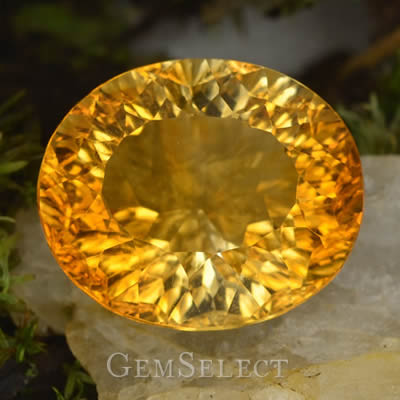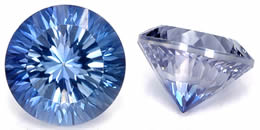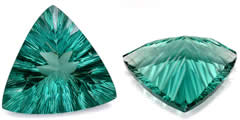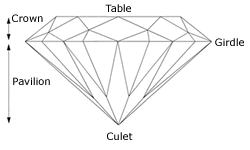Your Details
Your Details
|
Reviewed By Andreas Zabczyk
Concave Cut GemstonesConcave cut gemstones represent a striking innovation in the world of gem cutting, transforming the way light interacts with these beautiful stones. Unlike traditional flat-cut gems, concave cuts feature intricate, inwardly curved facets that enhance the gem’s brilliance and depth, creating a stunning play of light that captivates the eye. This unique cutting technique not only amplifies the stone’s natural color but also allows for greater light reflection and refraction, making it a favorite among jewelers and collectors seeking standout pieces. Browse through all our concave cut gemstones for sale. At one time, virtually all gemstones were cut as cabochons. Faceted gemstones made their appearance in European jewelry during the late 13th and early 14th centuries. With the advent of the horizontal cutting wheel in the late 1400s came the possibility of designing and repeating elaborately conceived geometric faceting schemes, thereby controlling and enhancing the light reflected from within the stone. 
Concave-Cut Citrine Gemstone
Since the 15th century, a number of different faceting styles have been developed, and innovation continues to this day. One recent innovation; the concave cut, has created considerable excitement in the world of gemstones. However, this cutting style has its critics and some gem experts would not call this technique an advance at all. 
Concave Cut Gemstones
The most typical example of the traditional art of faceting gemstones is the round brilliant cut. It consists of 58 total faces or facets. Of the 58 facets, 33 are on the crown (the top half of the gem); and 25 are on the pavilion, (the lower half of the stone). These facets are several different shapes, but one thing they all have in common is that they are two dimensional, (flat surfaces). Concave cutting involves cutting facets that are three dimensional (curved). The technology to cut concave facets was developed by the American inventor Douglas Hoffman around 1990. It allows conical-shaped, three-dimensional facets to be cut so that each facet has depth as well as length and breadth. The result is that more of the ambient light is refracted and returned to the eye in the form of brilliance. Generally, only the pavilion facets are concave cut, with flat facets on the crown. This often creates unusual reflective patterns, especially when the gem is viewed face-up. 
Natural Concave Cut Gemstones
In the hands of a skilled cutter, the results can be impressive. Yet not everyone is enthusiastic about the results. Only certain types of gems tend to benefit from concave faceting. Larger gems exhibit greater brilliance with this technique than smaller ones. Also, the improvements are more dramatic with light or medium-colored stones than gems with highly saturated color. Indeed, some experts warn that darker stones may look even darker and less attractive when cut with concave facets. 
Standard Diamond Cut
There are economic issues as well. Concave faceting involves removing more gem material to create the curved facets. The difference is about 10% when compared with traditional faceting techniques. This means that concave cutting is most appropriate for gemstones that are available in larger sizes at reasonable prices, such as quartz, citrine, amethyst, topaz and fluorite. Feel free to check out all our concave cut gemstones for sale. You will rarely see fine sapphire, ruby or red spinel cut with concave facets. Critics of concave cut gemstones claim that it is not just the cost, or the fact that darker stones are not improved by this technique. They say that concave cut gems lack personality or look plastic; that the true beauty of the gem is lost in all the faceting. This is a debate that only the market will decide. Currently, concave-cut gems are still speciality items. |
